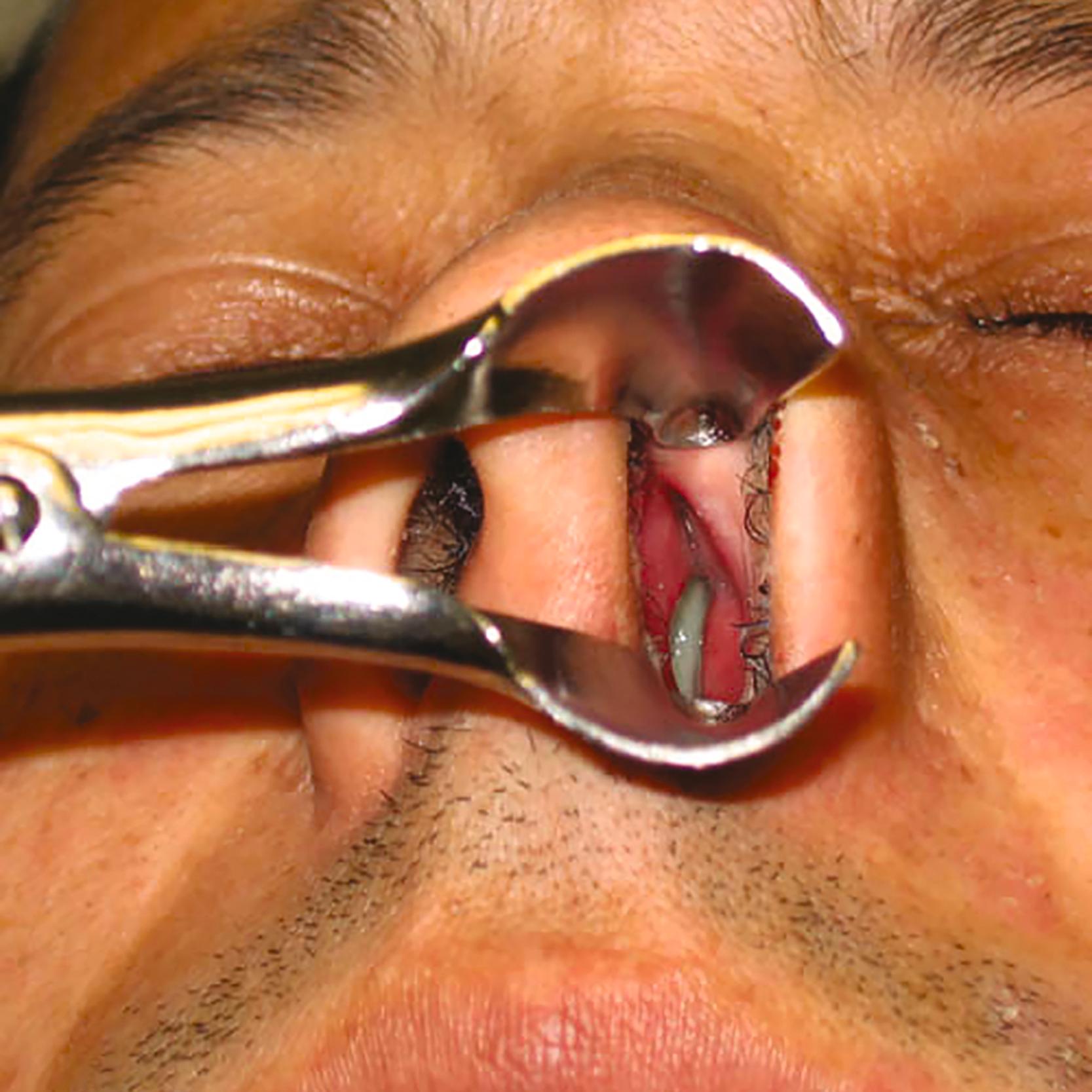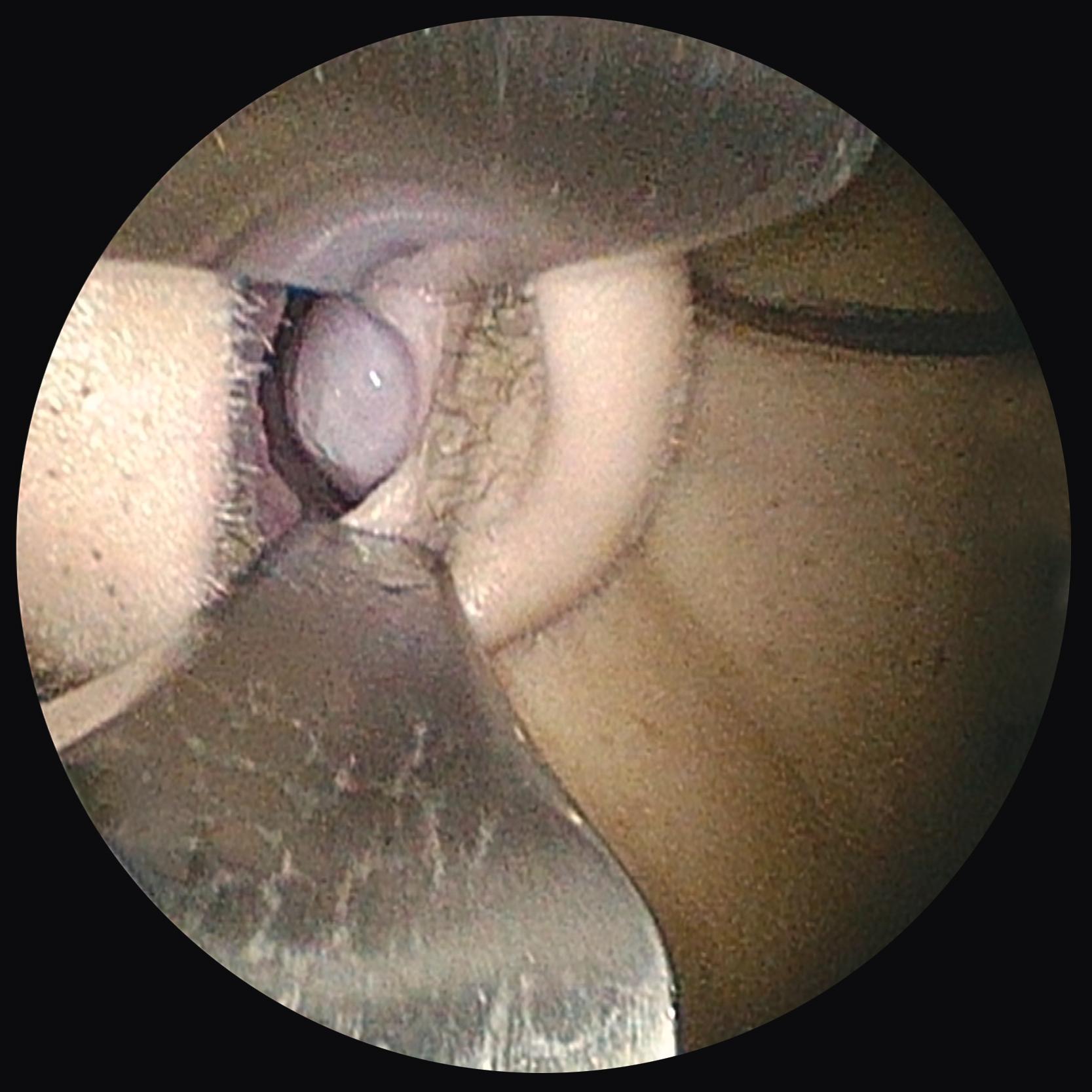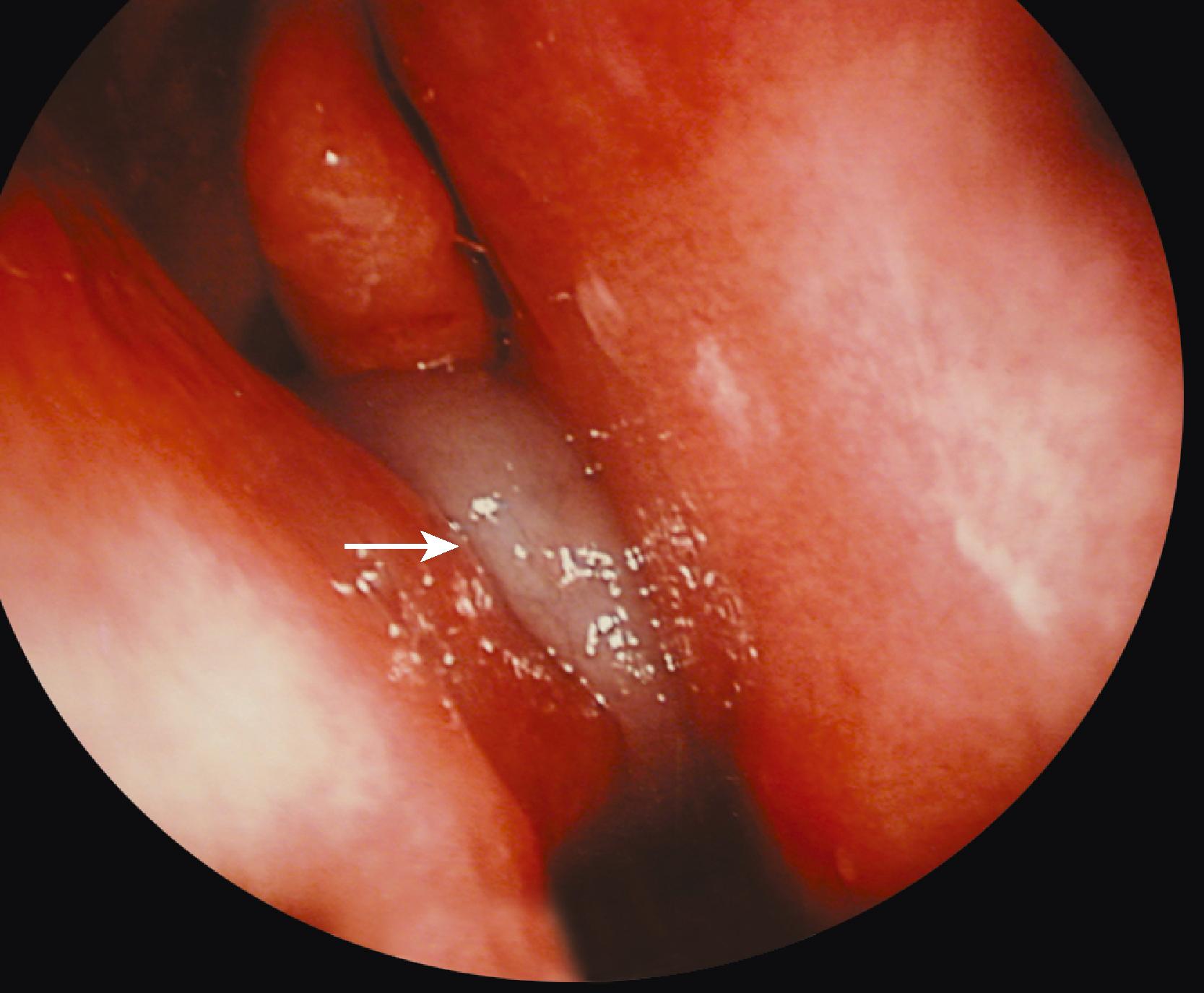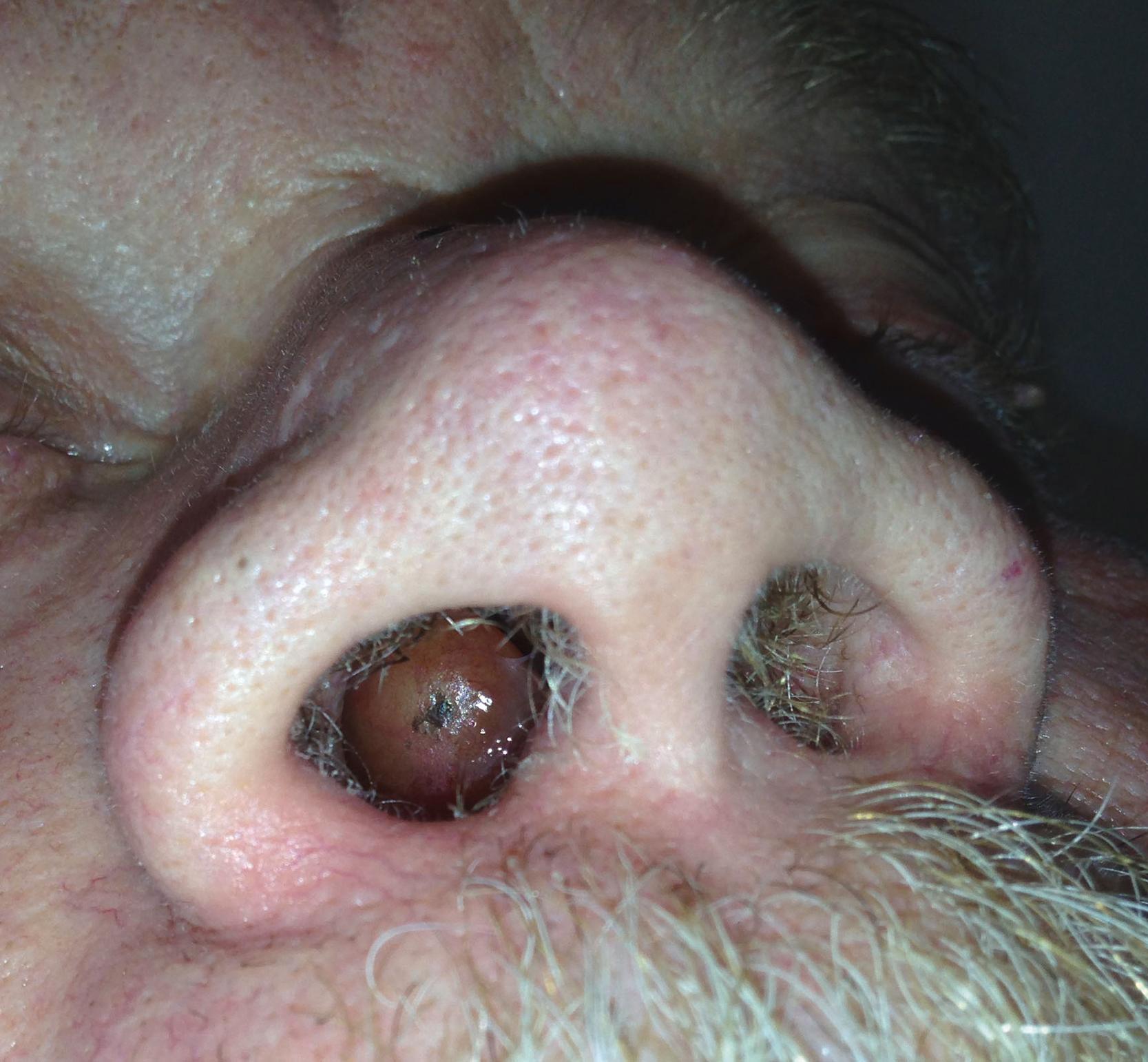Physical Address
304 North Cardinal St.
Dorchester Center, MA 02124
![]()
Patients with nose, sinus, and ear disorders may have a variety of chief complaints. Nasal symptoms, including rhinorrhea and congestion, may be due to allergic, infectious, inflammatory, neoplastic, or structural causes. Sinus disorders generally result in concomitant nasal inflammation, so the term rhinosinusitis is preferred. Patients who have rhinosinusitis are more likely to present with purulent rhinorrhea, facial pressure, loss of smell, and pain or headache ( Chapter 367 ). Common ear complaints include pain, tinnitus, loss of hearing ( Chapter 396 ), and vestibular symptoms ( Chapter 396 ). Epistaxis, which is bleeding from the nose, is usually easy to distinguish from hemoptysis from the bronchial tree ( Chapter 71 ) or hematemesis from the gastrointestinal tract ( Chapter 121 ).
Rhinitis is generally defined as any inflammatory process in the nose, with the common result being a sensation of excess mucous or nasal congestion. Anterior nasal drainage may be perceived by the patient as being accompanied by an activity such as eating (gustatory rhinitis) and may be visible to an observer. Posterior nasal drainage is more nebulous and subjective, but it is very common and is referred to as postnasal drip. Rhinitis and rhinosinusitis can have allergic or nonallergic causes.
Both rhinitis and rhinosinusitis may be categorized as acute, subacute, or chronic, and they can resolve or recur. In general, acute rhinitis and sinusitis describe inflammatory conditions of the nose and sinuses that persist for less than 4 weeks. Chronic rhinitis and sinusitis persist for more than 12 weeks despite treatment. Subacute rhinitis and sinusitis define symptoms that persist between 4 and 12 weeks and resolve completely with treatment. Recurrent acute rhinitis and sinusitis are defined by episodes that occur four or more times per year and persist for 7 to 10 days per episode, but symptoms clear completely between episodes.
The most common reason for a patient to seek the advice of a physician in the United States concerns problems relating to rhinitis and sinusitis. More than 30 million patient visits per year are devoted to this complaint, and billions of dollars are spent on medications that are expected to improve the condition.
Acute rhinosinusitis accounts for 2 to 10% of U.S. primary care visits. Allergic rhinitis, which is estimated to be the sixth most common chronic illness in the United States, affects between 10 and 20% of adults. Each year, nearly 80 million people in the United States experience 7 days or more of nasal or ocular symptoms as a result of allergic rhinitis, with an estimated annual direct and indirect medical cost of $5 to 8 billion and $11 billion, respectively. The incidence of allergic rhinitis has been increasing, perhaps related to fewer exposures to allergens in early life. The impact of allergic rhinitis also reflects its association with a variety of comorbid conditions, including asthma ( Chapter 75 ), acute and chronic rhinosinusitis, nasal polyposis, secretory otitis media, and sleep disorders ( Chapter 374 ).
Humans normally produce about 2 L of mucus per day from their nasal lining. The nose functions primarily as a humidification and filtration system, with a clean and refreshed nasal mucous blanket serving to trap particulate matter and organisms. The nasal and sinus lining consists of ciliated respiratory epithelium; the cilia function in a highly organized and orderly fashion under normal circumstances to transport particulate matter trapped in the mucous blanket in a consistent fashion so that the mucus can be swallowed, thereby avoiding deposition in the bronchi. The nose also serves as the organ of olfaction ( Chapter 395 ) to allow patients to discern tastes and avoid spoiled foods that could cause illness.
The nose represents the entry site for the majority of respired air, which is warmed, humidified, and filtered in the nose in preparation for the lower respiratory tract. Deposition of allergens, microbes, and other inspired materials presents a challenge to the immune system at this interface with the outside world. The mucosal barrier of the nasal and sinus cavities includes a ciliated respiratory epithelium, where coordinated mucociliary clearance transports particulate matter out of the respiratory tract and into the gastrointestinal tract. The normal microbiome ( Chapter 257 ) of the sinonasal mucosa is thought to contribute to host defense against pathogenic microbes.
Insults to the mucosal barrier, infection, and immune response to inspired particulate matter may result in inflammation of the sinonasal mucosa. The resultant hypersecretion of mucus and tissue edema manifest as the common symptoms of congestion and rhinorrhea. This process may be limited to the nasal cavity (rhinitis) or include both the sinuses and the nasal cavity (rhinosinusitis).
Alterations in the parasympathetic control of vascular tone in the nose may also lead to vascular engorgement and the secretion of mucus. The parasympathetic nervous system controls both vascular tone and mucus production in the nose. Inflammatory conditions, such as the common cold, can cause the nasal and sinus lining to swell, thereby highlighting the nasal cycle governed by parasympathetic neural control. In a normal state, one side of the nose is relatively decongested and one side is relatively congested because of vascular engorgement. This vascular dilation allows humidification and warming of inspired air and can also affect the ability to discern odors in the process of olfaction. During rhinitis, the inflammation exaggerates the normal relative comparison between the decongested and congested sides of the nose and can be perceived as an uncomfortable nasal stuffiness that shifts from side to side over a period of several hours.
Allergic respiratory diseases result from a hypersensitivity immune reaction to airborne allergens ( Table 394-1 ). Perennial allergic rhinitis may occur year-round. The most common causes include indoor fungi, animal dander, and dust mites. Cat dander is the most common animal allergen, but rodents (mice, rats, guinea pigs, ferrets, hamsters), rabbits, dogs, and birds also may be significant. Dust mites, which live in bedding, pillows, and stuffed animals, are semiseasonal with maximal impact from August to December. Cockroaches and other insects, including gypsy moths, crickets, ladybugs, spiders, and beetles, may be locally important sources of allergen. Seasonal allergic rhinitis is most often triggered by pollens from trees and grasses.
| COMMON NAME | SEASON IN UNITED STATES |
|---|---|
| SEASONAL ALLERGENS | |
| Trees | |
| Birch Cottonwood Elm Cedar Oak Maple |
March–May April–May February–May March–May May–June March–May |
| Grasses | |
| Kentucky blue Timothy Orchard Sweet vernal Fescue Bermuda |
Mid-May–June Mid-May–June Mid-May–June Mid-May–June Mid-May–June Mid-May–June |
| Weeds | |
| Ragweed Kochia Russian thistle Sage Marsh elder English plantain |
August–September July–September July–September July–September July–September July–September |
| Outdoor Molds | |
| Alternaria Cladosporium |
Spring–fall Spring–fall |
| PERENNIAL ALLERGENS | |
| Household Allergens | |
| Cockroaches (German and American) | |
| Dust mites: Dermatophagoides farinae, D. pteronyssinus, Blomia tropicalis Other insects (spiders, ladybugs) |
More active in summer and humid months |
| Animals | |
| Cats Dogs Other pets (guinea pigs, ferrets, hamsters, horses) Rodents |
|
| Indoor Molds | |
| Aspergillus Cladosporium Penicillium |
|
Exposure to allergies results in both early- and late-phase reactions in the nasal cavity. IgE subunits in the surface of mast cells and basophils recognize specific allergens, thereby triggering degranulation of the immune cells with release of histamine and other inflammatory mediators. Within minutes of exposure to the allergen, this process results in tissue edema, nasal congestion, and nasal irritation, frequently associated with sneezing. Approximately 4 to 8 hours after the exposure, chemoattractants and adhesion molecules released in response to the inflammatory mediators promote infiltration of leukocytes, eosinophils, basophils, CD4+ lymphocytes, and monocytes. Activation of these cells results in release of a second wave of inflammatory mediators. Nasal congestion is generally the dominant symptom during the late-phase reaction.
The severity of allergic disease is mediated not only by the current pollen count and exposure to allergens, but also by the cumulative exposure for a given allergy season. Priming is not an allergen-specific phenomenon—patients report increased sensitivity to nonspecific nasal irritants such as perfume and smoke following exposure to allergens. The increased reactivity is thought to be secondary to recruitment of mast cells and basophils as well as neural hyperresponsiveness. Because of this phenomenon, patients may continue to experience symptoms of severe seasonal allergy even after the pollen count of their triggering allergens falls.
Asthma ( Chapter 75 ) and allergic rhinitis share a common pathophysiology and strong epidemiologic association. About 80% of patients with allergic asthma also suffer from allergic rhinitis, and the presence of allergic rhinitis is a risk factor for the development of asthma.
Sinusitis differs from rhinitis in that the term implies an infectious cause rather than physiologic dysfunction. Nevertheless, many different mechanisms of inflammation besides infection may give rise to what is currently generally termed sinusitis.
Acute rhinosinusitis is most frequently caused by a viral infection. Acute bacterial rhinosinusitis may develop secondarily, owing to virus-induced tissue edema and mucus stasis. Odontogenic infection ( Chapter 393 ) may progress to acute or chronic bacterial rhinosinusitis and is a common cause for unilateral infection of the maxillary sinus.
Chronic rhinosinusitis includes both the neutrophilic and eosinophilic drivers of inflammation. Isolated or unilateral disease may occur secondary to chronic suppurative infections, including odontogenic disease and fungal processes, such as a fungus ball or mycetoma. The microbiology of chronic rhinosinusitis differs from that of acute rhinosinusitis, with Staphylococcus aureus ( Chapter 267 ), Pseudomonas aeruginosa ( Chapter 282 ), and anaerobic bacteria ( Chapter 273 ) commonly cultured. Although the precise role of microbes in the pathophysiology of chronic rhinosinusitis remains unclear, chronically inflamed sinuses are characterized by a loss of bacterial diversity and overgrowth of a pathologic bacterial species.
When normal nasal mucosal function is lost, patients often complain of nasal crusting or obstruction, hypersecretion or postnasal drip, coughing, facial pressure, and fatigue. Nasal obstruction that shifts from side to side during the day is common in many types of rhinitis and may be considered an exaggeration of normal physiology.
Rhinitis is characterized by sneezing, which is often paroxysmal; rhinorrhea with clear, watery secretions; nasal congestion; and itching in the nares and palate. In allergic rhinitis, these symptoms are generally associated with allergic conjunctivitis manifested by ocular itching, lacrimation, and conjunctival injection. Severe conjunctivitis is less common in perennial allergic rhinitis than in seasonal allergic rhinitis. Lethargy, fatigue, arthralgias, myalgias, and cognitive impairment frequently accompany allergic rhinitis. Fever is not a feature of allergic rhinitis, even though the lay term for this condition is hay fever, which reflects the influenza-like nature of this disease. The natural history of allergic rhinitis is for symptoms to worsen inexorably during several weeks in the presence of ongoing allergen exposure. Symptoms often do not peak until well after the peak in pollen counts, and then they persist after pollen counts have declined.
Cardinal symptoms of acute rhinosinusitis ( Table 394-2 ) include purulent nasal drainage; nasal obstruction; and facial pain, pressure, or fullness. Additional signs and symptoms include fever, cough, fatigue, reduced or absent sense of smell, dental pain, and ear symptoms such as pressure and fullness. The sign with the highest diagnostic value is purulent nasal discharge or posterior pharyngeal discharge. The presence of purulent nasal drainage generally supports the diagnosis of acute bacterial sinusitis, but culture of the drainage does not necessarily correlate well with actual pathogenic bacteria found on direct sinus culture.
| CARDINAL SYMPTOMS | OTHER SIGNS/SYMPTOMS |
|---|---|
| Facial pain, pressure, or fullness Nasal obstruction Nasal purulent discharge |
Hyposmia/anosmia Fatigue Dental pain Fever Cough Ear pressure or fullness |
In chronic rhinosinusitis, typical symptoms include nasal obstruction or congestion, drainage, diminished sense of smell, and facial pressure. Acute pain and fever are uncommon with chronic disease. Patients with chronic sinusitis often note a dull facial pressure that seems to worsen with dependency. Other factors favoring a diagnosis of bacterial sinusitis over viral sinusitis include length of illness beyond 10 days or when a patient’s symptoms worsen within 10 days after an initial improvement in symptoms.
A thorough history should probe whether patients have tried over-the-counter or prescription medications, including antihistamines, decongestants, mucolytics, analgesics, mast cell stabilizers, and even steroids, and whether they have helped improve the condition. In addition, other prescription medications have side effects that affect nasal physiology, including antihypertensive medications that cause systemic vasodilation, aspirin, corticosteroids, and antibiotics. Specific questions regarding allergies are important, including seasonality or environmental triggers, the presence or absence of pets, food sensitivities, recent changes in environment, and living conditions, with a focus on old or new carpets, mattresses, furnace filters, or freshly painted interior walls. A patient should be questioned about past allergy skin testing or other testing.
A recent history of other family members or coworkers being ill with an upper respiratory viral infection suggests an infectious over an environmental process. A careful past medical history should allow one to determine whether relevant conditions such as previous nasal surgery or trauma, granulomatous diseases, cystic fibrosis ( Chapter 77 ), rheumatologic conditions, immune deficiencies ( Chapter 231 ), or other problems may be contributing factors. Unilateral nasal congestion raises concern for either an anatomic abnormality, such as septal deviation, perhaps related to previous trauma, a polyp or other neoplastic mass, or perhaps even a foreign body.
The nose should be inspected with a nasal speculum to assess nasal septal anatomy ( Fig. 394-1 ), the most caudal aspect of the inferior turbinates ( Fig. 394-2 ), and the possibility of large nasal polyps ( Fig. 394-3 and 394-4 ) or other masses. In patients with allergic rhinitis, the physical examination may reveal pale and swollen inferior turbinates, whereas copious nasal secretions are more apparent with viral infections. By spraying the nose with a topical decongestant such as phenylephrine (Neo-Synephrine) or oxymetazoline, the middle meatus, which is the air space between the middle turbinate and lateral nasal wall, can often be visualized to assess for nasal polyps or purulent discharge. Examination of the mouth and oropharynx, including the posterior pharyngeal wall, with a tongue blade if necessary, can sometimes identify a stream of postnasal discharge or pus. Sinus palpation and transillumination, although part of the art of medicine, are not sufficiently reliable for diagnosis. The patient’s ability to open the mouth without limitation helps exclude trismus, which can sometimes be caused by a dental infection or a deep neck infection.




A complete examination of the head and neck should be performed to look for signs of recent or old trauma such as ecchymosis under the eyelids, swelling of the soft tissue of the face, or deviation of the nasal dorsum. The neck should be palpated for adenopathy ( Chapter 154 ) or other masses.
A basic eye examination should be performed to assess pupillary function, extraocular movements, and possible nystagmus ( Chapter 392 ). An ear examination should be conducted to assess the tympanic membranes bilaterally. In patients with an abnormality of the tympanic membrane or concomitant complaints of hearing loss or disequilibrium ( Chapter 396 ), pneumatoscopy using an air bulb attached to the otoscope can be used to insufflate the ear canal and assess for mobility of the tympanic membrane; decreased mobility suggests a middle ear effusion. Weber and Rinne testing using a 512-Hz tuning fork screens for conductive hearing loss, especially unilateral loss.
Endoscopic examination of the nose, almost always performed by a specialist, is the “gold standard” for evaluating rhinitis and sinusitis. A flexible or rigid fiberoptic scope can allow fine inspection of the septum, turbinates, middle meatus, and sphenoethmoid recess, as well as direct inspection of the nasopharynx, orifice of the eustachian tube, and fossa of Rosenmüller, which is just rostral to the Eustachian tube in the nasopharynx and is often the site of origin of nasopharyngeal carcinoma ( Chapter 176 ). Flexible endoscopy can be used to further inspect the oropharynx, larynx, and most of the hypopharynx ( Chapter 397 ). Mucus samples can be obtained for culture.
Cultures of the nostril or lower nasal cavity are not typically useful and are not recommended. An endoscopically guided culture of the middle meatus by a specialist may help guide treatment for acutely ill immunocompromised patients, for patients suspected of having acute bacterial rhinosinusitis, for patients with refractory chronic rhinosinusitis, or for those whose sinusitis is suspected of causing secondary meningitis, epidural or subdural abscess, brain abscess, orbital involvement, or cavernous sinus thrombosis.
A nasal smear can reveal eosinophils, which is consistent with allergic rhinitis. Likewise, skin testing or radioallergosorbent testing can help pinpoint allergic triggers ( Chapter 230 ). In patients with acute sinusitis, a white blood cell count with differential may be useful. In patients with chronic sinusitis, serum immunoglobulin levels can be helpful: highly elevated IgE levels can raise suspicion for allergic fungal sinusitis, whereas low levels of IgG and other subclasses suggest immunodeficiency ( Chapter 231 ). If the patient has chronic nasal crusting as a primary complaint, screening serologic tests for sarcoid ( Chapter 83 ), granulomatosis with polyangiitis ( Chapter 249 ), T-cell lymphomas ( Chapter 171 ), syphilis ( Chapter 295 ), tuberculosis ( Chapter 299 ), Sjögren syndrome ( Chapter 247 ), and other chronic inflammatory diseases can be considered. Relatively rare infections such as rhinoscleroma also may be present, so biopsy and cultures may be indicated to help reveal a diagnosis. Use of illicit substances should be considered because cocaine and other illicit drugs may cause chronic nasal crusting. Toxicology screening can be useful if substance abuse ( Chapter 365 ) is suspected. In a patient with a lifelong history of sinusitis since childhood, cystic fibrosis should also be considered ( Chapter 77 ).
Become a Clinical Tree membership for Full access and enjoy Unlimited articles
If you are a member. Log in here